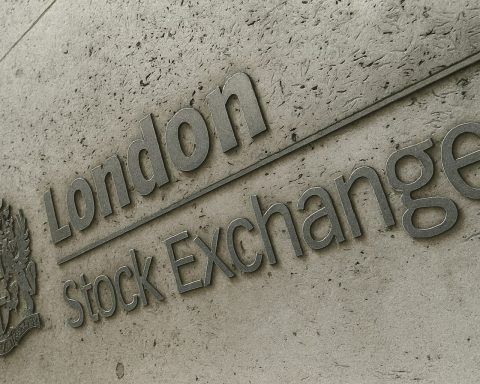UK inflation has finally ticked lower, dropping to 3.6% in October 2025, but any sense of relief for households is being tempered by a renewed surge in food prices and lingering pressure on living costs. The fall in the headline rate has sharpened expectations that the Bank of England could cut interest rates again in December — just as Chancellor Rachel Reeves prepares a politically pivotal budget on 26 November. [1]
Headline inflation finally edges down
Official data from the Office for National Statistics (ONS) shows the Consumer Prices Index (CPI) rose by 3.6% in the 12 months to October, down from 3.8% in September. It is the first fall in the headline rate in five months and the lowest reading since June. [2]
On a monthly basis, prices increased by 0.4%, a slower rise than the 0.6% recorded in October last year. The broader CPIH measure, which includes owner occupiers’ housing costs, eased to 3.8% from 4.1%. [3]
The ONS says the main downward pressure on inflation came from housing and household services, particularly gas and electricity bills. Changes to the Ofgem energy price cap mean gas and power prices are still rising year‑on‑year, but far more slowly than they were a year ago. For a typical dual‑fuel household paying by direct debit, Ofgem estimates an average annual bill of about £1,755 under the October cap – an increase of £35 but much milder than last winter’s hikes. [4]
Cheaper hotel accommodation also helped to cool inflation. Room prices fell this October, in contrast with modest increases a year earlier, easing pressure in the “restaurants and hotels” category. Air fares also rose less sharply than they did last autumn, adding to the downward pull on the overall rate. [5]
However, motor fuel is starting to move the other way. Petrol and diesel prices were slightly higher than a year earlier, and motoring groups warn that global oil market tensions could keep pump prices elevated into winter. [6]
Despite October’s improvement, inflation remains well above the Bank of England’s 2% target, and the UK is still among the more inflation‑prone advanced economies according to recent International Monetary Fund assessments. [7]
Food prices jump 4.9%: why shoppers still feel squeezed
Behind the headline fall, the picture in supermarket aisles is much harsher.
The ONS reports that food and non‑alcoholic drink prices were up 4.9% year‑on‑year in October, an acceleration from 4.5% in September. Monthly food prices rose 0.5% in just one month, compared with a 0.1% rise in October 2024. [8]
Guardian analysis of the official figures highlights that staples such as bread and cereals were major drivers of the increase, alongside higher prices for meat, fish and vegetables. Confectionery and sweet spreads – including sugar, jam, honey, syrup and chocolate – also became more expensive, only partially offset by a small fall in fruit prices. [9]
Sky News, drawing on both the latest data and industry feedback, notes that supermarket prices are still being pushed up by: [10]
- Higher employer national insurance contributions and increased minimum pay introduced after last year’s autumn budget, which retailers say have raised wage bills.
- Strong global demand for chicken and reduced UK cattle herds, feeding through into higher meat prices.
- Poor harvests of cocoa and coffee, which have sent input costs for chocolate and hot drinks to record levels this year.
Climate‑linked shocks are increasingly part of the story. The Energy and Climate Intelligence Unit (ECIU) warns that extreme weather – floods, droughts and heatwaves – has hit harvests and made food chains more vulnerable. Its analysis suggests that foods heavily exposed to climate stress, such as butter, beef, milk, coffee and chocolate, have been rising in price around four times faster than other items in the typical shopping basket. [11]
The result is a jarring disconnect: headline inflation is drifting down, but the weekly food shop is still getting noticeably more expensive, leaving many households feeling that the cost‑of‑living crisis never really ended.
Producer prices show inflation pressure in the pipeline
Today’s figures were released alongside the latest producer price inflation data, which offer clues about future consumer prices.
- Input prices paid by UK manufacturers were 0.5% higher than a year earlier in October, down from 0.7% in September.
- Factory gate (output) prices – what firms charge for their goods – were 3.6% higher year‑on‑year, slightly up from 3.5% the previous month. [12]
Domestic food inputs stand out: prices for UK‑produced food used by manufacturers rose 4.2% on the year, a touch higher than in September. Imported food costs also turned positive, up 1.1% after being negative earlier in the year. [13]
At the same time, crude oil prices fell sharply in annual terms, dragging down the cost of fuel and some raw materials. That mix – stubbornly high food‑related costs but falling energy inputs – suggests that while some inflationary pressure is easing, the pipeline for processed food and manufactured goods is still far from benign. [14]
Services inflation and core prices are easing – but still too high
The Bank of England pays particularly close attention to services inflation and core inflation (which strips out volatile food and energy) as indicators of underlying domestic price pressure.
According to the ONS and analysis from Reuters: [15]
- Services inflation fell to 4.5% in October, its lowest level since late 2024.
- Core CPI slipped to 3.4%, down from 3.5% in September.
That is progress, but these measures remain well above 2%, and several members of the Bank’s Monetary Policy Committee (MPC) have warned that strong wage growth and tight labour markets could keep services inflation sticky. Chief economist Huw Pill recently signalled he is not yet convinced that pay pressures have eased enough to justify aggressive rate cuts. [16]
Markets increasingly expect a December rate cut
The Bank of England’s Bank Rate currently stands at 4%, after a series of cuts since August 2024. The most recent reduction came in August 2025. [17]
At its last meeting, earlier this month, the MPC voted 5–4 to leave rates on hold, with Governor Andrew Bailey using his casting vote to side with the hawks who favoured caution. [18]
Today’s softer inflation data has shifted market expectations again:
- Interest‑rate futures now imply a high probability of a quarter‑point cut to 3.75% at the next MPC decision on 18 December. [19]
- Yields on two‑year UK government bonds edged lower after the data, while sterling weakened modestly against the dollar as traders priced in a slightly faster pace of rate reductions for 2026. [20]
Economists quoted by Reuters and other outlets argue that inflation is “now on what should be a sustained downward path”, while growth and the labour market are losing momentum — a combination that typically encourages central banks to loosen policy. [21]
However, doves and hawks on the MPC remain deeply split. Some members believe there is enough slack in the economy, with rising unemployment and weaker wage growth, to justify cuts without jeopardising the 2% target. Others insist rates must stay high for longer to ensure inflation is firmly under control. [22]
Reeves’ 26 November Budget: the key wildcard
Chancellor Rachel Reeves now finds herself at the centre of the story.
Her late‑November budget, scheduled for 26 November, is widely expected to include a mix of tax rises and targeted support in order to plug a multibillion‑pound hole in the public finances while easing the pressure on households. [23]
Reeves has repeatedly promised to “do more to bring prices down” and has signalled three main budget priorities: cutting NHS waiting lists, reducing government debt and tackling the cost of living. [24]
According to reporting and analysis from the Guardian and others, options under active discussion include: [25]
- A possible cut to the 5% VAT rate on domestic energy, which would directly lower gas and electricity bills.
- Measures to boost competition in sectors such as dentistry and veterinary services, where consolidation has raised concerns about monopoly pricing.
- A cautious approach to any further broad‑based giveaways that could reignite inflation.
At the same time, speculation continues over fuel duty. Motoring groups note that without the existing 5p‑a‑litre duty cut, petrol and diesel would already be back near pre‑pandemic levels; some in the Treasury are reported to be eyeing the relief as a potential revenue source. [26]
Reeves is also acutely aware of criticism that her first budget, last year, contributed to price pressures. Business groups and economists estimate that higher employer national insurance contributions and minimum wage increases may have added around one percentage point to inflation, as companies passed on the extra costs. [27]
For the Bank of England, the budget is crucial: several analysts describe it as the “last obstacle” before a December cut, with rate‑setters keen to see whether fiscal policy helps or hinders the disinflation process before they pull the trigger. [28]
What this means for households and businesses
For households, the mixed messages in today’s data will feel familiar:
- Energy bills are no longer rising at the terrifying pace seen in 2022–23, and the new Ofgem cap limits the annual average bill increase to a relatively modest £35. But energy costs remain historically high, and any move to reverse fuel‑duty cuts could push up forecourt prices again. [29]
- Food prices are still rising faster than overall inflation, especially for staples like bread, meat and dairy, and for treats like chocolate and coffee. Climate shocks and global commodity markets mean these pressures are unlikely to disappear quickly. [30]
- Wage growth is cooling and unemployment has edged up to around 5%, while economic output grew just 0.1% in the third quarter, according to recent data highlighted by Sky News. That combination leaves many families feeling worse off even as the official inflation rate falls. [31]
If the Bank of England does cut interest rates in December, variable‑rate mortgage holders and some borrowers on tracker loans could see monthly payments fall slightly, while savers would likely face lower returns. But even a quarter‑point reduction would still leave borrowing costs far higher than during the ultra‑low‑rate era of the 2010s. [32]
For businesses, especially in food production and retail, the combination of elevated input costs, higher wages and cautious consumer demand continues to compress margins. Producer price data suggest little immediate relief on domestic food costs, even as energy becomes cheaper. [33]
The road ahead: three critical dates
Over the next month, three moments will shape the trajectory of UK inflation, interest rates and living costs:
- 19 November – Today’s inflation and producer price release
- Confirms a fall in the headline rate to 3.6% but a renewed rise in food prices and still‑elevated core and services inflation. [34]
- 26 November – Rachel Reeves’ Budget
- Expected to mix tax rises with targeted support while trying not to stoke inflation. Energy VAT, fuel duty and sector‑specific competition measures will be closely watched. [35]
- 18 December – Bank of England interest rate decision
- Markets currently see a strong chance of a pre‑Christmas rate cut, but MPC members will weigh November’s inflation data, the new budget and fresh labour‑market numbers before deciding. [36]
For now, today’s figures look like an important turning point rather than a full‑blown victory over inflation. Headline price growth is moving in the right direction, and markets sense that cheaper borrowing is on the horizon. But as long as food bills keep rising and real incomes remain under pressure, many households will struggle to feel that any corner has been turned at all.
References
1. www.ons.gov.uk, 2. www.ons.gov.uk, 3. www.ons.gov.uk, 4. www.ons.gov.uk, 5. www.ons.gov.uk, 6. www.ons.gov.uk, 7. www.theguardian.com, 8. www.ons.gov.uk, 9. www.theguardian.com, 10. news.sky.com, 11. eciu.net, 12. www.ons.gov.uk, 13. www.ons.gov.uk, 14. www.ons.gov.uk, 15. www.ons.gov.uk, 16. www.reuters.com, 17. www.bankofengland.co.uk, 18. www.theguardian.com, 19. www.reuters.com, 20. www.reuters.com, 21. www.reuters.com, 22. www.theguardian.com, 23. www.theguardian.com, 24. www.theguardian.com, 25. www.theguardian.com, 26. news.sky.com, 27. www.reuters.com, 28. www.theguardian.com, 29. www.ons.gov.uk, 30. www.ons.gov.uk, 31. news.sky.com, 32. www.bankofengland.co.uk, 33. www.ons.gov.uk, 34. www.ons.gov.uk, 35. www.theguardian.com, 36. www.bankofengland.co.uk










